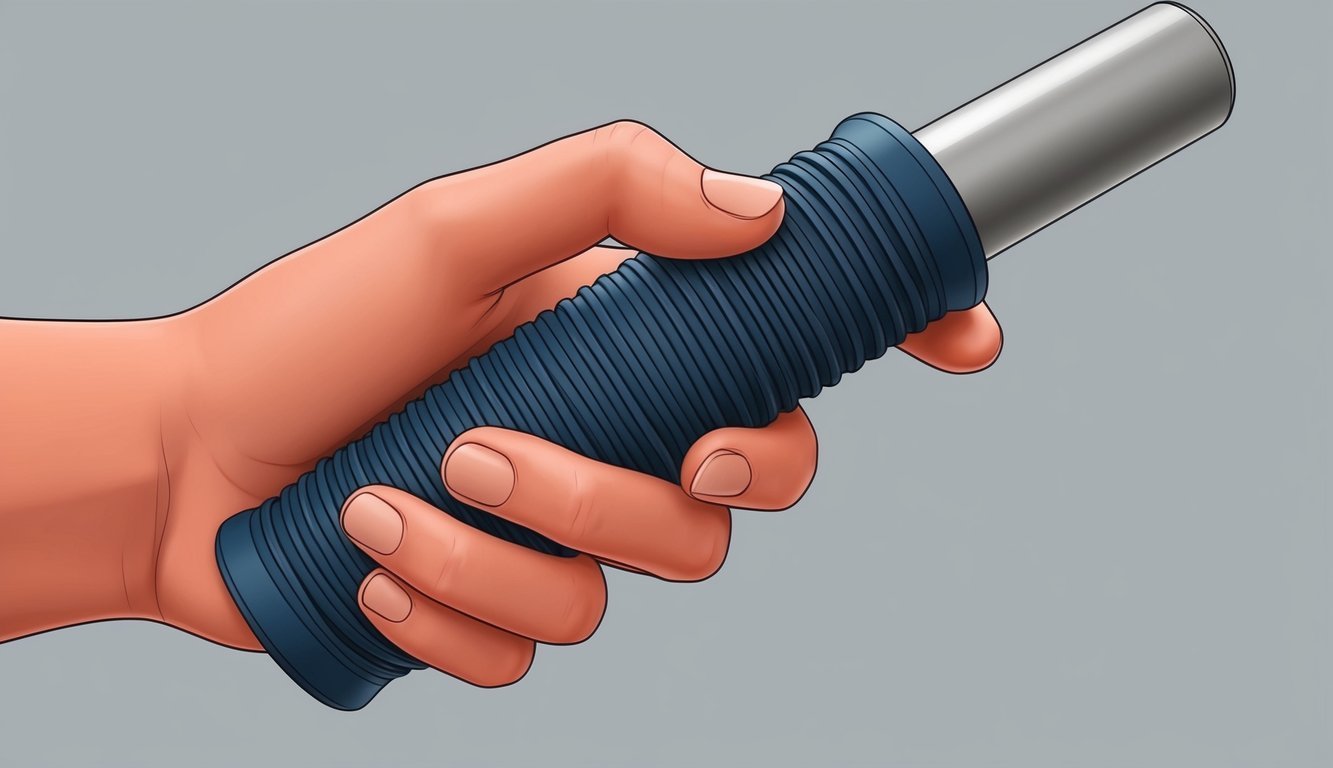Mastering the art of the putting grip is essential for any golfer aiming for success on the greens.
This skill dramatically influences your performance, helping you lower scores and build confidence.
A proper putting grip not only enhances your accuracy but also ensures comfort during play.

In the world of golf, there are numerous grip styles to explore, each offering unique benefits.
From the conventional grip to more adventurous choices like the claw or arm lock, finding the right style can transform your game.
Professional golfers often experiment with different grips to find the one that best suits their swing and technique.
Your choice of grip affects how the putter interacts with the ball, impacting both speed and direction.
Selecting the best grip for your game might take some experimentation, but the payoff in improved performance makes it worthwhile.
Ready to refine your putting skills? Dive into the array of grip styles and see which aligns perfectly with your golfing needs.
Key Takeaways
- A proper putting grip enhances accuracy and comfort.
- Different grip styles offer various benefits and play styles.
- Choosing the right grip can improve your overall golf performance.
The Importance of a Proper Putting Grip
A proper putting grip is crucial for a consistent and controlled stroke.
It enhances your comfort, enabling more successful putts.
By focusing on grip fundamentals and how they impact stroke and control, you can improve your overall game.
Grip Fundamentals and Consistency
The grip is the foundation of your putting stroke.
It determines how consistent your putts will be on the green.
A well-fitted grip allows you to feel more connected to the club, enhancing confidence.
When your grip is comfortable, you can focus more on the fundamental aspects of your stroke, such as alignment and aim.
Pay attention to grip size, as it directly impacts comfort and consistency.
A grip that’s too large or small can disrupt your consistency and lead to missed putts.
By selecting the right grip, you can establish a stable base.
This stability helps you maintain a repeatable stroke, which is vital for achieving consistent results.
Impact on Stroke and Control
The impact of a proper grip on your stroke is significant.
It allows for a smoother motion, reducing unwanted movements that could affect your control.
By maintaining a soft yet firm grip, you can execute a reliable stroke.
With the right grip, you gain better control over the putter head.
This control translates into the ability to manage both distance and direction, crucial factors in successful putting.
Moreover, a grip that aligns with your natural stance and swing style minimizes tension, fostering a more fluid motion.
Ultimately, confidence in your grip leads to improved control, enhancing your ability to make precise and controlled putts consistently.
Exploring Various Putting Grip Styles
When it comes to enhancing your putting game, selecting the right grip can make a significant difference.
From conventional techniques to some innovative alternatives, the options are tailored to meet individual needs and preferences.
Conventional Grip Techniques
The most common style is the reverse overlap grip.
This involves placing your left index finger across the fingers on your right hand, which can help stabilize the club and improve control.
It’s a technique that many beginners and seasoned players find comfortable.
Conventional grips allow for natural hand movement and are often easier for those transitioning from an overlapping style in regular golf swings.
These grips provide consistency and have been used by many players to achieve a smooth stroke.
You may also consider transitioning to the left-hand low method, popularized by players like Jordan Spieth and Dustin Johnson.
This style flips the conventional grip for right-handed players, with the left hand placed lower on the shaft, promoting a more stable wrist position.
Alternative Grips and Their Popularity
Alternative grips offer unique solutions for those seeking different techniques.
The claw grip positions the right hand below the shaft and is known for reducing hand tension, offering more accuracy and control.
Another choice is the arm lock grip, where the handle is placed against your arm to decrease wrist movement.
This style has gained popularity for its reliability and stability during the stroke.
The cross-handed or left-hand low technique varies from the standard by switching hand positions, helping to reduce the influence of the dominant hand.
It’s essential to explore these grips to find the one aligning best with your style and improving your game.
How Grip Influences Putting Technique

The way you grip your putter can significantly impact your performance on the green.
It affects alignment, control over distance and speed, and can lead to a more consistent putting technique.
Addressing the Ball
When you approach the ball with your putter, the grip is crucial for proper alignment.
A stable grip helps maintain a square clubface, which ensures the ball rolls towards your target line.
Many golfers use a conventional grip, where the thumbs run straight down the shaft, promoting control over the putter.
Some golfers may prefer the claw grip, which can help reduce excessive wrist movement.
This grip supports a smooth stroke, maintaining consistent contact with the ball.
Whatever grip you choose, it should balance comfort with control, allowing you to feel connected to the club throughout the stroke.
Adjusting for Distance and Speed
Your grip also plays a vital role in managing distance and speed on the greens.
The pressure applied to your grip can affect how smoothly the putter head moves during your stroke.
A lighter grip pressure facilitates a softer stroke, ideal for shorter putts where precision is key.
Conversely, a firmer grip can stabilize the club for longer putts, helping you convey more power.
Experimenting with different grips like the left-hand low technique allows you to adjust your technique based on the greens you’re putting on.
Familiarizing yourself with these adjustments can improve your confidence in varying conditions.
Choosing the Best Grip for Your Game

Selecting the right putting grip can significantly enhance your game by improving both accuracy and control.
It is crucial to weigh personal comfort against the effectiveness of various grip styles commonly seen on the PGA Tour.
Factors to Consider
When choosing the best putting grip, several factors are crucial.
First, grip styles vary widely, each with unique characteristics.
The conventional grip is often favored by experienced golfers for its simplicity and control.
Alternatively, the left-hand low grip provides stability and is popular among high-level players like Jordan Spieth and Dustin Johnson.
Your personal comfort with each grip is paramount.
Trying different styles on the practice green helps gauge compatibility with your stance and stroke.
Additionally, the best putter grip should align with your individual strengths and weaknesses, ensuring it complements rather than hinders your natural swing mechanics.
Evaluating Grip Comfort and Effectiveness
Finding a balance between comfort and effectiveness is essential.
Your preferred grip should provide adequate control while feeling natural.
Testing each grip style repeatedly can help identify the one you instinctively return to, as this often indicates where your comfort lies.
Consider using a notebook to track your performance with each grip style.
Record variables such as accuracy, distance control, and consistency.
This method helps in quantitatively evaluating how each grip influences your game.
Remember, the best putting grip is subjective and depends on your personal needs, style, and comfort level.
A grip that feels effortless to grasp and aids in achieving low scores should be your ultimate choice.
Professional Insights and Strategies

In the world of golf, understanding professional choices and adapting them to your own game can significantly impact your performance.
From examining favored grips of top golfers to adopting their strategies, there is much to learn from the experts.
Pro Golfers and Their Preferred Grips
Professional golfers often select grips that complement their unique play styles. Tiger Woods utilizes a conventional reverse overlap grip, offering control and stability, crucial for his precise putting techniques.
Phil Mickelson prefers the claw grip, which provides a lighter feel and helps maintain a natural arc in movements.
Meanwhile, Jordan Spieth employs a cross-handed grip, which aids in keeping the putter face square through impact, enhancing accuracy.
Rory McIlroy and Dustin Johnson sometimes switch between grips based on course conditions.
McIlroy leans towards the overlap grip to balance control and feel, while Johnson favors a conventional grip, relying on its simplicity for efficiency on fast greens.
Observing such preferences allows you to understand how grip choice affects putting performance.
Adapting Pro Techniques to Your Style
Adapting professional techniques requires examining specific elements of pro golfers’ methods.
Start by experimenting with different grips used by golfers like Matt Wallace.
He is known for adjusting grips to suit various conditions.
His flexibility in grip choice can inspire you to adapt like a pro.
Implement small changes initially.
If you admire Spieth’s consistency, try the cross-handed grip during practice rounds to see if it suits your game.
Pay attention to how each grip influences your stroke and ball direction.
Understanding the strategies behind their choices is key to benefiting from pro insights.
Exploring these techniques can help you develop a grip strategy attuned to your strengths and the nuances of the courses you frequent.

